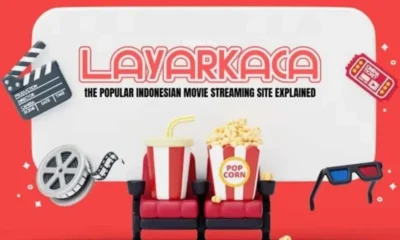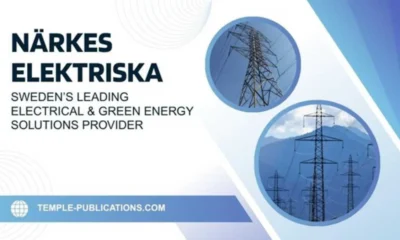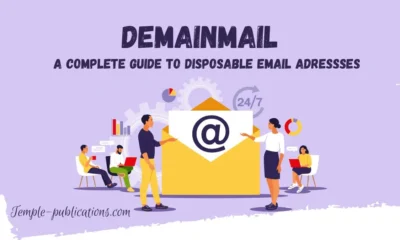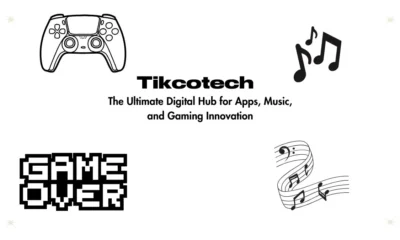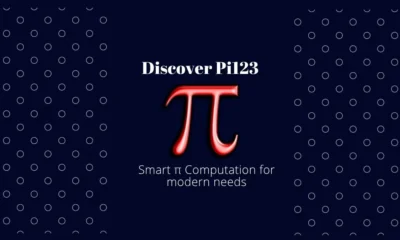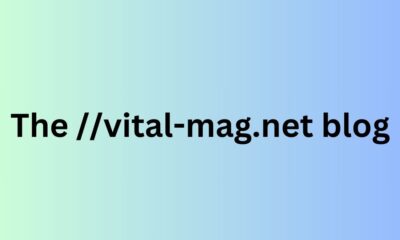GENERAL
The Hidden Costs of Inefficient Waste Management and How to Avoid Them
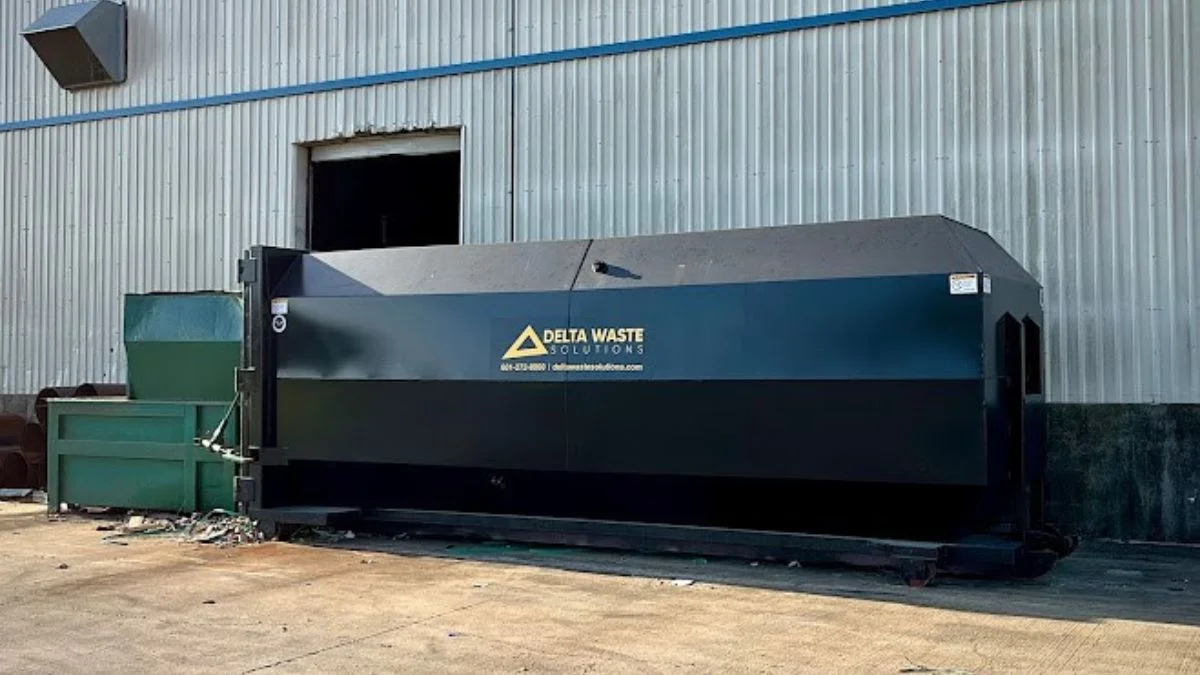
Effective waste management is often overlooked in project planning, but ignoring it can lead to unforeseen expenses and inefficiencies. Whether you’re managing a construction project, a business overhaul, or a community cleanup, the costs of inefficient waste management can quickly add up, affecting budgets and timelines. Renting roll off dumpsters is a practical and cost-effective solution to streamline waste disposal while avoiding these hidden pitfalls. Here’s a closer look at the unseen costs of poor waste management and strategies to mitigate them.
The True Cost of Inefficient Waste Management
Poor waste management practices create multiple layers of expenses, from financial penalties to productivity losses. Understanding these hidden costs can help businesses and individuals make better decisions about their waste disposal strategies.
1. Frequent Transportation Costs
When waste isn’t consolidated efficiently, frequent trips to landfills or recycling centers become necessary. These trips consume fuel and time, driving up overall expenses. For example:
- Fuel Expenses: Multiple trips increase fuel consumption, especially if disposal sites are far away.
- Wear and Tear: Frequent use of vehicles leads to higher maintenance costs over time.
Using roll off dumpsters eliminates the need for repeated trips by providing a central container for all waste, reducing transportation requirements.
2. Labor Inefficiencies
Disorganized waste handling often results in higher labor costs. Workers may spend unnecessary time collecting, sorting, or transporting debris instead of focusing on core tasks. These inefficiencies include:
- Lost Productivity: Valuable labor hours are wasted on inefficient waste management practices.
- Increased Staffing Needs: Disorganized sites may require additional personnel to manage debris.
Centralized dumpsters improve site organization, allowing workers to concentrate on their primary responsibilities without interruptions.
3. Penalties for Non-Compliance
Improper waste disposal can result in fines and legal penalties, particularly for businesses that fail to adhere to local regulations. Common violations include:
- Illegal Dumping: Disposing of waste in unauthorized areas.
- Improper Handling of Hazardous Materials: Mishandling restricted items like chemicals, batteries, or electronic waste.
Partnering with a trusted provider, such as Delta Waste Solutions, ensures compliance with all local waste disposal laws, minimizing the risk of fines.
4. Lost Recycling Opportunities
Failing to separate recyclable materials from general waste means businesses miss out on cost-saving recycling programs. Recycling not only reduces landfill contributions but can also generate revenue or lower disposal fees for recyclable items.
5. Negative Environmental Impact
Inefficient waste management often leads to environmental harm, such as increased greenhouse gas emissions from transportation or contamination of natural resources. These impacts can damage a business’s reputation and result in long-term financial liabilities.
How Roll Off Dumpsters Help Avoid Hidden Costs
Roll off dumpsters provide a simple yet powerful solution to avoid the pitfalls of inefficient waste management. By integrating them into your waste disposal strategy, you can reduce costs, improve efficiency, and support sustainable practices.
1. Consolidating Waste
Roll off dumpsters serve as a centralized location for collecting debris, eliminating the need for scattered piles of waste. This consolidation reduces transportation and labor inefficiencies while maintaining a cleaner, safer work environment.
2. Customizable Sizes
Dumpster rentals come in various sizes, allowing you to select the container that best fits your project’s needs. Whether you’re managing a small residential cleanup or a large-scale construction project, choosing the right size ensures maximum efficiency without unnecessary costs.
3. Compliance Support
Trusted providers like Delta Waste Solutions offer guidance on proper waste disposal practices, ensuring compliance with local regulations. They also handle the transportation and sorting of materials, reducing the risk of legal penalties.
4. Facilitating Recycling
Renting roll off dumpsters simplifies the separation of recyclable materials. Designating specific containers for metal, wood, or concrete ensures these materials are diverted from landfills and processed for reuse, lowering overall disposal costs.
5. Reducing Environmental Impact
By consolidating waste and optimizing transportation, dumpsters minimize emissions associated with frequent trips to disposal sites. Additionally, eco-conscious providers prioritize recycling and sustainable disposal methods, supporting environmental goals.
Best Practices for Efficient Waste Management
To maximize the benefits of roll off dumpsters and avoid hidden costs, consider these best practices:
1. Plan Ahead
Assess your project’s waste generation early in the planning process. Estimate the volume and type of waste to determine the appropriate dumpster size and quantity.
2. Separate Waste Types
Segregate waste at the source to simplify recycling and disposal. Common categories include:
- Recyclables: Metal, cardboard, glass, and certain plastics.
- General Waste: Non-recyclable materials like mixed debris or damaged items.
- Hazardous Materials: Batteries, chemicals, and other restricted items that require special handling.
3. Choose Strategic Placement
Position dumpsters in accessible areas to minimize the distance workers must travel to dispose of waste. Ensure the site is level and clear of obstructions for safe and efficient use.
4. Schedule Timely Pickups
Avoid overflow and delays by coordinating regular pickups with your provider. Adjust the schedule based on the pace of your project to ensure uninterrupted operations.
5. Work with a Reliable Provider
Partnering with a trusted company like Delta Waste Solutions ensures reliable service, transparent pricing, and eco-friendly practices. Their expertise simplifies the rental process and enhances overall efficiency.
Case Studies in Hidden Costs
While avoiding case studies, it’s worth noting the broader implications of hidden waste management costs. Businesses across industries—from construction to retail—often face similar challenges, reinforcing the importance of adopting efficient waste strategies.
Common Themes:
- Overlooked compliance issues leading to unexpected fines.
- Unanticipated labor costs due to disorganized disposal methods.
- Missed opportunities for recycling valuable materials.
These recurring issues highlight the need for proactive planning and professional waste management solutions.
Maximizing ROI with Dumpster Rentals
Investing in roll off dumpsters delivers measurable returns by reducing hidden costs and enhancing operational efficiency. Benefits include:
- Lower Transportation Expenses: Fewer trips to disposal sites save time and money.
- Increased Productivity: Workers can focus on core tasks instead of waste management.
- Improved Reputation: Eco-friendly practices and compliance with regulations boost public perception.
Final Thoughts
Inefficient waste management can have far-reaching consequences for businesses and individuals, impacting budgets, timelines, and environmental goals. By recognizing the hidden costs and implementing strategies to mitigate them, you can optimize your project’s success. Roll off dumpsters offer a versatile and cost-effective solution, providing centralized waste collection, recycling opportunities, and compliance support. Partnering with a reliable provider like Delta Waste Solutions ensures that waste management is one less challenge to worry about, allowing you to focus on completing your project efficiently and sustainably.
GENERAL
Närkes Elektriska: Sweden’s Leading Electrical
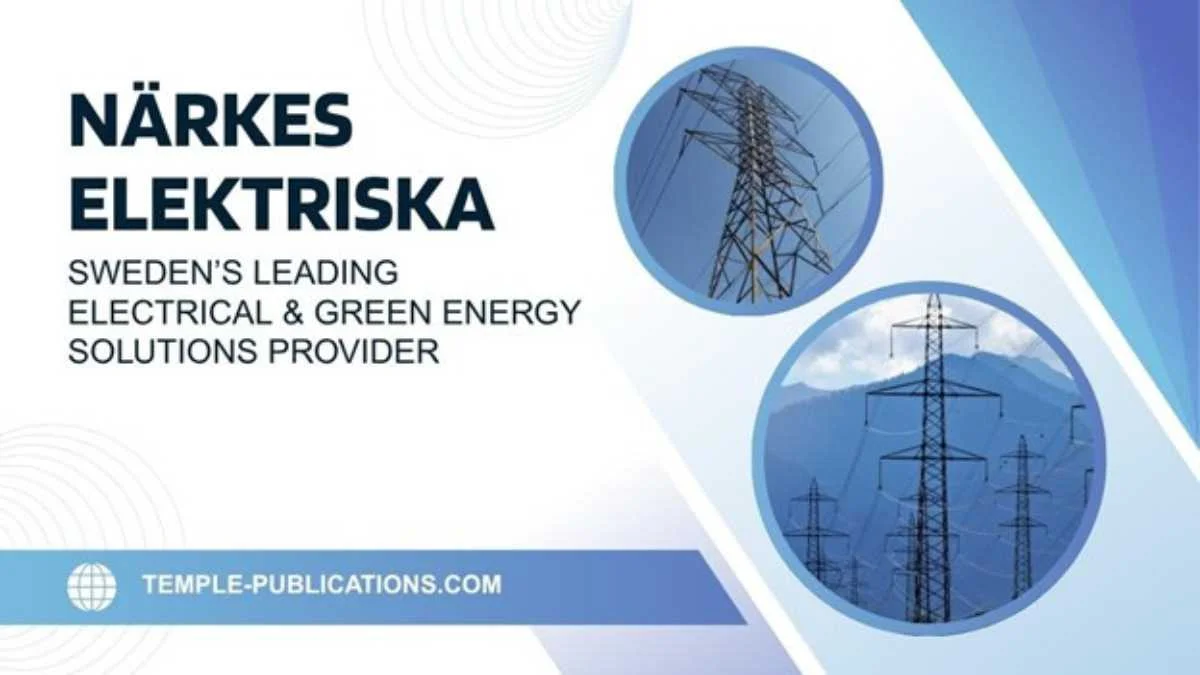
Established in 1931, Närkes Elektriska (NEA) is today one of the most trusted brands in creating sustainable energy solutions and electrical works in Sweden. Formally starting as a mere local affiliate to ASEA, it has since come to encompass the entire country as a recognized force that knows how to balance age-old crafting and next-generation technologies. It is not all about cables and currents, it is all about a smarter, greener Sweden; the intelligent energy infrastructure that helps NEA bring a smarter, greener Sweden to life. Having a broad spectrum of offerings that span smart home systems and automation, solar panels, and EV chargers, NEA is at the forefront of the energy transition in Sweden.
What Is Närkes Elektriska?
Närkes Elektriska is a fully autonomous, nationally established provider of electrical and energy services. NEA shows its activities in residential, commercial, and industrial segments, where its end-to-end solutions contribute to a sustainable world, energy efficiency, digital control, and climate-smart infrastructure. It is no longer installing complicated automation systems into factories or retrofitting homes with solar and EV capabilities – NEA ensures that every service is carefully adapted to fit environmental responsibility and precision expectations.
A Timeline of Growth: The Evolution of NEA
1931–1949: Roots as an ASEA Subsidiary
Närkes Elektriska was established in 1931 at a crucial moment in the Swedish electrification period. As ASEA (a precursor of ABB), NEA was instrumental in the deployment of power infrastructure in the Narke region. Its early investment in infrastructure formed the basis of rural electrification and industrialization on a broad scale.
1949–1982: Regional Expansion and Independence
NEA became completely independent in 1949 and began expanding regionally. The subsequent decades witnessed the company gain a reputation of reliability, quality and technical excellence in central Sweden. In schools, municipal buildings, manufacturing facilities, residential developments, and other projects, NEA was now the operations partner of choice that provided safe and lasting installations.
2005–2010: Digital Innovation & Smart Energy Shift
In the realization of the changing energy environment, NEA took a strategic leap in the early 2000s to move to digital systems and sustainability-driven services. The company started to implement smart automation, constructing energy-efficient control systems, and researching renewable energy systems. This step was the beginning of NEA becoming a tech-driven company.
2010–2024: Nationwide Consolidation and Strategic Partnerships
Over the past 10 years, NEA has nationally expanded its operations by creating alliances with municipalities, utility groups, and developers. The company has been spending lots of money in training, digitalization, and sustainable building. This consolidation step has enabled NEA to deal with large projects of infrastructure development that share the same local touch that characterizes its local origins.
NEA’s Key Service Areas
Närkes Elektriska’s diverse service portfolio reflects its commitment to innovation, safety, and sustainability. Here’s an overview of the company’s main offerings:
- Electrical Installations
From wiring residential homes to outfitting commercial properties, NEA ensures all installations meet the highest safety and efficiency standards. - Automation & Control Systems
NEA installs advanced PLC (Programmable Logic Controller) systems and building automation solutions to streamline operations and reduce energy waste in industrial and commercial settings. - Smart Home Integration
Through IoT-enabled devices and centralized control systems, NEA empowers homeowners to manage lighting, heating, security, and appliances more efficiently. - Solar Energy Solutions
The company designs and installs solar panel systems tailored to both private residences and commercial rooftops, supporting Sweden’s national renewable energy goals. - Energy Audits & Optimization
NEA conducts detailed energy assessments to identify inefficiencies and recommend upgrades, often helping clients reduce utility costs by 20% or more. - EV Charging Infrastructure
From individual home units to multi-vehicle commercial setups, NEA’s EV charging solutions support the growing shift toward electric mobility across Sweden.
How NEA Operates: Business Model & Revenue Channels
NEA’s business model is built around flexibility, technical expertise, and long-term value. The company serves multiple market segments through a mix of:
- Project-Based Revenue from large-scale installations and construction partnerships.
- Maintenance Contracts offering recurring revenue from schools, hospitals, and commercial properties.
- Consulting & Auditing Services for energy performance improvements.
- Residential Services such as smart home upgrades, solar installations, and EV charger fittings.
By combining traditional B2B projects with modern B2C solutions, NEA has successfully diversified its income while staying adaptable to market trends.
Vision 2030: NEA’s Commitment to a Greener, Smarter Sweden
Närkes Elektriska is strengthening its sustainability and innovation core as it looks across the horizon to 2030. Its future involves the increased collaboration of solar and wind energy to reinforce the Swedish renewable infrastructure. The other aspect is that NEA seeks to reskill its workforce in areas of automation, IoT, and compliance with the green economy. Focusing on smart grid preparedness, the company will facilitate decentralized network and real-time information networks. Also, NEA embraces circularities through waste minimization, environmentally friendly materials, and energy-efficient systems, which adhere to the national and EU climate objectives of Sweden.
Conclusion: A Legacy of Excellence and Innovation
Since its humble roots as ASEA, Närkes Elektriska has stuck to its core values of craftsmanship, reliability, and responsibility as one of the pioneers of smart energy and electrical services in the country. With the world headed toward a sustainable energy future, NEA is not only changing, it is leading the change. Having served more than 90 years with an eye towards the future, Närkes Elektriska is an indispensable ally in the creation of a smarter, cleaner, and more efficient Sweden.
GENERAL
What is Demainmail: A Complete Guide to Disposable Email Addresses
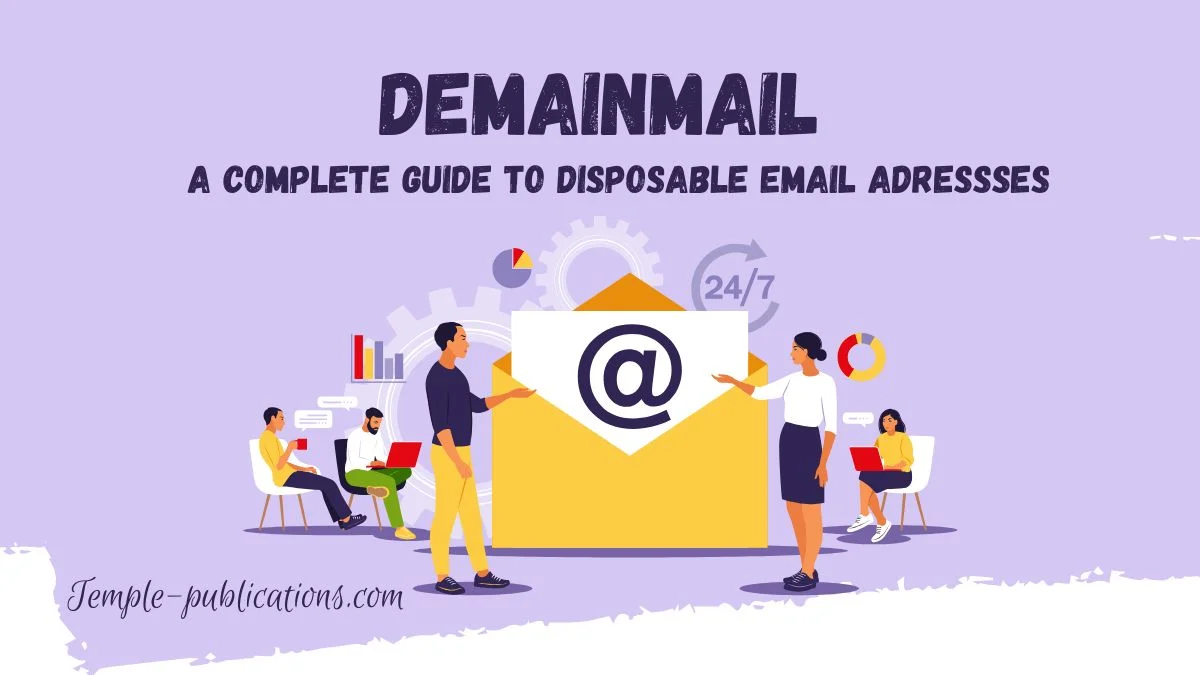
Your emails are not yours as you presume. Each announcement, newsletter, subscription, and download requires your email address, it appears, but once you give it to them, the avalanche of spam starts. In the era of ubiquitous digital advertising, security breaches, and privacy concerns, an email address may turn into the doorway to unlimited frustration.
What then is the solution? There is Demainmail, a free and temporary email that will allow you to get instant and completely anonymous access to an inbox that will disappear after you finish with it.
What Is Demainmail?
Demainmail is a temporary email service that allows users to generate throwaway email addresses for short-term use. These addresses require no registration and disappear after a limited period—perfect for signing up for services, downloading files, or verifying accounts without risking your personal inbox. Think of it as a digital cloak that lets you move through the web without leaving a trail of personal data behind.
Whether you’re dodging spam, testing websites, or avoiding intrusive tracking, Demainmail offers a lightweight, one-click solution for everyday privacy protection online.
The Vision Behind Demainmail’s Creation
Demainmail was founded and created to accomplish one of its missions, that is, to safeguard digital identities in a more intrusive online world. The spam bot, the data broker, and the aggressive marketing campaign all became commonplace in the 2000s, and users wanted a tool that could keep their inbox safe but that was still easy to use.
Rather than scaling up an email service to any number of features and login credentials, Demainmail creators shaved away the excess until all that was left was speed, ease of use, and privacy. They not only aim to prevent spam, but also to regain control over their digital imprint for people.
Core Features of Demainmail
Demainmail is packed with simple yet powerful functionalities that make it an essential tool for digital privacy:
- No Sign-Up Required: Generate and use an email address instantly—no account needed.
- Auto-Deleting Inboxes: Emails self-destruct after a set period (usually within an hour).
- Real-Time Inbox Access: View incoming emails without delay through a web-based interface.
- Multiple Domain Support: Choose from several email domains to bypass blacklists.
- Minimal Interface: Fast-loading and user-friendly with zero distractions.
These features combine convenience with security, making Demainmail one of the most efficient throwaway email platforms available today.
Benefits of Using Demainmail
Using Demainmail comes with several key advantages:
- Instant Privacy Protection: Keeps your real email hidden during risky or unnecessary interactions.
- Spam Reduction: Prevents your main inbox from being cluttered with ads and irrelevant emails.
- Safe Testing: Useful for developers, testers, and QA professionals working with form submissions or trial accounts.
- No Strings Attached: Great for one-time downloads, giveaways, or accessing gated content without long-term commitment.
For anyone tired of unsolicited emails or concerned about email-based tracking, Demainmail provides a lightweight but powerful solution.
Who Should Use Demainmail?
While anyone can benefit from a disposable inbox, some users will find Demainmail especially helpful:
- Privacy Enthusiasts: Those who don’t want to share personal information unnecessarily.
- Online Shoppers: People who want to access deals or create burner accounts without inbox spam.
- Software Testers & Developers: Professionals testing sign-up flows, contact forms, or verification systems.
- Students & Freelancers: Individuals looking for quick access to study materials, trials, or resource downloads.
If you use the internet regularly and value your time and privacy, chances are high Demainmail can improve your digital experience.
Demainmail vs Other Disposable Email Services
| Feature | Demainmail | TempMail | Guerrilla Mail | 10 Minute Mail |
| Registration Required | No | No | No | No |
| Inbox Lifespan | ~1 hour (adjustable) | ~10 minutes to 1 hour | Up to 1 hour | 10 minutes |
| Custom Domain Options | Yes | No | Yes | No |
| Interface Simplicity | Very clean | Moderate | Advanced (cluttered) | Very simple |
| Mobile Optimization | Yes | Yes | No | Yes |
Pricing and Access
Demainmail is presently free to use. No hidden fees, subscriptions, or freemium levels are involved. You can access it directly via its website, and no downloading or installation is necessary.
Whereas other disposable services provide more expensive plans with more email retention or custom inboxes, Demainmail has decided to keep things fairly simple and free starting out. But as subscription email services increase in popularity, perhaps paid features will be added later.
The Future of Demainmail
With growing concerns over data privacy, tools like Demainmail are becoming more relevant than ever. The platform may expand with features like:
- Mobile App Support
- Custom Inbox Lifespans
- Encrypted Temporary Storage
- Browser Extensions or API Integrations
As privacy regulations evolve (such as GDPR and CCPA), services that empower users with anonymity and control will only gain momentum. It is well-positioned to be part of that future.
Conclusion
Demainmail promises to be a welcome relief against the ceaseless spam and privacy invasion of the new life of the internet. It allows anyone to offer instant, disposable email addresses to users without any form of registration, offering a frictionless means of personal data protection and ease of use online.
Need to test an app, download a free PDF, or take evasive action against the spammy newsletter? Demainmail will get you there without using your true identity. Easy, quick, and safe, that is what a throwaway email needs to be.
FAQ Section
Is Demainmail safe to use?
Yes, as long as you’re not using it for sensitive or personal data. Emails are deleted after a short time and are not meant for secure communication.
How long do emails stay in a Demainmail inbox?
Typically, emails are stored for about an hour, though this may vary by domain and server load.
Can I send emails using Demainmail?
No, Demainmail is a receive-only service. It’s designed for temporary sign-ups and one-way communication.
Is Demainmail legal?
Yes. Disposable emails are legal to use, but abusing them for fraud or spam may violate laws or website terms of service.
GENERAL
Webtoons: The Digital Evolution Taking Comics to New Heights
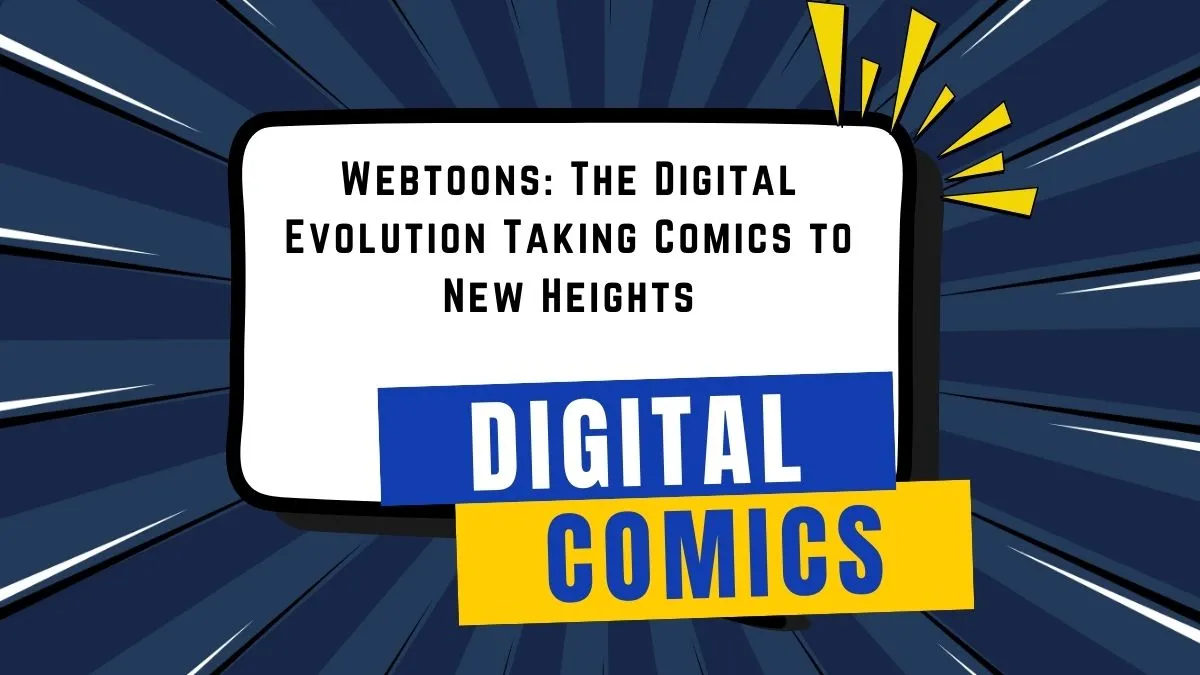
Comics have been around for ages. But Webtoons? They changed the game. These digital comics, originally from South Korea, are designed for smartphones. No more zooming in on tiny panels. Just scroll. Simple. The ease of access made Webtoons a global hit. People wanted stories on the go, and Webtoons delivered. From romance to horror, every genre found a home. Unlike print comics, they bring fast updates, interactive comments, and community-driven engagement. Big names like LINE Webtoon and Tapas pushed the industry forward. And guess what? The boom isn’t slowing down. With billions in revenue and growing audiences, Webtoons are here to stay. Ready to dive into this digital revolution? Let’s explore.
The Vertical Scrolling Format: A Game Changer
Traditional comics have panels. Webtoons have a smooth, endless scroll. It’s intuitive, built for mobile screens. Readers don’t flip pages; they glide through the story. This format isn’t just convenient. It’s immersive. Dramatic pauses? Easily built with spacing. Suspense? Just scroll a little more. Unlike print, Webtoons guide emotions through pacing, not just panels. This vertical style lets artists experiment. They use creative transitions, cinematic storytelling, and even animated effects. It keeps readers hooked. Platforms like this and KakaoPage mastered this format. The result? A whole new way to experience comics. And let’s be honest. Who doesn’t love a story that flows effortlessly?
Webtoons vs. Traditional Comics: Key Differences
Comics have been loved for decades. But Webtoons? They flipped the script. Print comics rely on physical books or PDFs. Webtoons? Just open an app, and boom—you’re in. Unlike traditional comics, Webtoons don’t need speech bubbles cluttering the page. Text flows naturally, blending with the art. No weird zoom-ins, no awkward cropping. Also, it update fast. Weekly, sometimes even daily. Compare that to print comics, which take months between issues. Another big shift? Diversity. Webtoons embrace fresh voices and new genres. Traditional comics stick to superheroes. They bring slice-of-life, romance, horror—anything. The verdict? Webtoons aren’t just different. They’re redefining how we consume stories.
The Global Expansion of Webtoons
South Korea started it, but the world caught on fast. Webtoons broke language barriers, thanks to official translations and fan-driven communities. Platforms like LINE Webtoon and Tapas pushed them worldwide. The U.S., Japan, China—everyone’s on board. Hollywood took notice too. Netflix adaptations? Check. Anime series? Yup. Even K-dramas now come from this platform. The global love for Webtoons isn’t slowing down. Why? The stories feel fresh, diverse, and real. No cookie-cutter narratives. Just original content that speaks to readers everywhere. The Webtoon boom is far from over. More countries, more languages, more adaptations—It is shaping entertainment’s future.
The Business of Webtoons: A Billion-Dollar Industry
Webtoons aren’t just stories. They’re a money machine. Creators earn through ads, paid episodes, Patreon, and even merch. Some Webtoons turn into full-blown franchises—movies, games, even theme park attractions. The industry? Worth billions. Platforms like Naver Webtoon and KakaoPage rake in massive profits. The reason? Microtransactions. A few cents here and there add up fast. And let’s not forget premium content. Readers willingly pay for early access to their favorite Webtoons. The best part? Newcomers can still read most for free. That mix of accessibility and monetization keeps it thriving. This isn’t just a trend. It’s a full-fledged industry.
Why Readers Love Webtoons
They aren’t just comics. They’re an experience. Readers love them because they’re easy to access—anytime, anywhere. Unlike traditional comics, it don’t cost a fortune. Many are free, with optional paid content. Plus, the variety is insane. Love horror? It’s there. Romance? Tons. Action? Absolutely. And then there’s the community. Readers interact in comment sections, sharing theories, reactions, and memes. Webtoon creators even engage with fans directly. This interaction makes it feel alive, not just another story. The biggest reason people love Webtoons? They evolve. They change with trends, embrace new ideas, and never stop surprising.

How to Create a Successful Webtoon
Dream of making a Webtoon? It’s doable. Start with a strong story. Something unique, something gripping. Then, focus on art. You don’t need to be perfect, just expressive. Use digital tools—Clip Studio Paint, Procreate, or even Photoshop. Next? Consistency. Weekly uploads keep readers hooked. Promotion is key too. Social media, forums, even TikTok—spread the word. Monetization? Start with ad revenue, then explore Patreon, merch, or premium episodes. Most important tip? Engage with your readers. They’re your biggest supporters. Creating a Webtoon takes effort, but the reward? Worth it.
The Role of AI in Webtoon Creation
AI is changing everything, even Webtoons. Some artists use AI to generate backgrounds, speed up coloring, or enhance details. It saves time. But is AI replacing human creativity? Not yet. Webtoons thrive on originality and emotional depth—things AI still struggles with. However, AI tools are becoming more advanced. This platforms might soon integrate AI-assisted features for beginners. Some creators fear AI will flood the market with low-effort comics. Others see it as a tool, not a threat. One thing’s clear: AI is here, and it’s reshaping Webtoon creation.
Webtoons and Social Media: A Perfect Match
Social media made Webtoons explode. Twitter, TikTok, Instagram—these platforms amplify Webtoon visibility. Artists tease upcoming chapters, fans create viral memes, and entire fandoms rally around their favorite stories. TikTok, especially, is a powerhouse. A single viral video can skyrocket a Webtoon’s popularity overnight. Creators who leverage social media see faster growth. Engagement isn’t optional; it’s essential. A Webtoon without social media presence? It’s like shouting into the void. To succeed, creators must be where their readers are—online, scrolling, and searching for the next big story.
Challenges and Controversies in the Webtoon Industry
Webtoons may be booming, but they’re not without problems. One big issue? Plagiarism. Some artists steal ideas or styles, leading to messy legal battles. Another concern? Creator burnout. The pressure to release weekly updates can be brutal. And let’s talk pay. Not all Webtoon artists earn well. Some platforms offer low revenue splits, leaving creators struggling. There’s also the debate over free vs. premium content. Some readers hate paywalls, while creators need income. It’s a tricky balance. Webtoons revolutionized storytelling, but the industry still has growing pains.
The Future of Webtoons: What’s Next?
What’s coming next? More innovation. More global reach. Webtoons might soon integrate VR, interactive elements, or even AI-generated stories. Platforms will expand, bringing more diverse voices. The business model? Likely to evolve, offering better revenue for creators. And print comics? They won’t disappear, but Webtoons will dominate. The future of Webtoons isn’t just bright—it’s limitless.
Conclusion
Webtoons transformed comics. They made storytelling more accessible, interactive, and global. Whether you’re a reader, creator, or investor, the Webtoon wave isn’t slowing down.Therefore, it’s time to embrace the future of digital comics.
-

 BIOGRAPHY1 month ago
BIOGRAPHY1 month agoBehind the Scenes with Sandra Orlow: An Exclusive Interview
-

 HOME7 months ago
HOME7 months agoDiscovering Insights: A Deep Dive into the //vital-mag.net blog
-

 HOME10 months ago
HOME10 months agoSifangds in Action: Real-Life Applications and Success Stories
-

 BIOGRAPHY8 months ago
BIOGRAPHY8 months agoThe Woman Behind the Comedian: Meet Andrew Santino Wife





